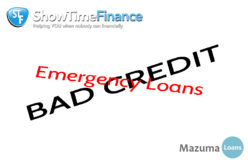Cracking The Personal Short Term Loan Rates Code

Cracking the personal short term loan rates code
A personal loan can also be considered a short term loan those loans which are between one to five years. These can include types of personal loans such as credit cards, medical loans directly from the provider or hospital. Line of Credit, Payday loans or Cash advances and Overdrafts.
And when it comes to personal loans they can either be secured or unsecured loans. With an unsecured personal loan the lender relies entirely on the borrower’s promise to pay them back and has no recourse to specific assets.
In the event of the bankruptcy of the borrower, a creditor with a secured personal loan will have first claim on the pledged assets. While the unsecured creditors will have a general claim on the remaining assets of the borrower making the unsecured creditors to generally recover a smaller proportion of their claims than the secured creditors.
Due to the increased risk involved, interest rates for unsecured loans tend to be higher. Lenders will often base the interest rates charged on the borrower’s credit rating. Those borrowers with a record of making payments on time and taking their obligations seriously will have a higher credit rating and thus pay lower interest rates.
Ultimately unsecured loans are often more expensive and less flexible than secured loans like those of your mortgage and car title loan. But unsecured loans are suitable if the borrower needs a short-term loan.
On the other end of the spectrum are payday loans and cash advances that are typically due on your next payday often within a week or two. These types of loans often charge a fee rather than interest because the interest rate is so high it would be illegal and considered loan-sharking.










